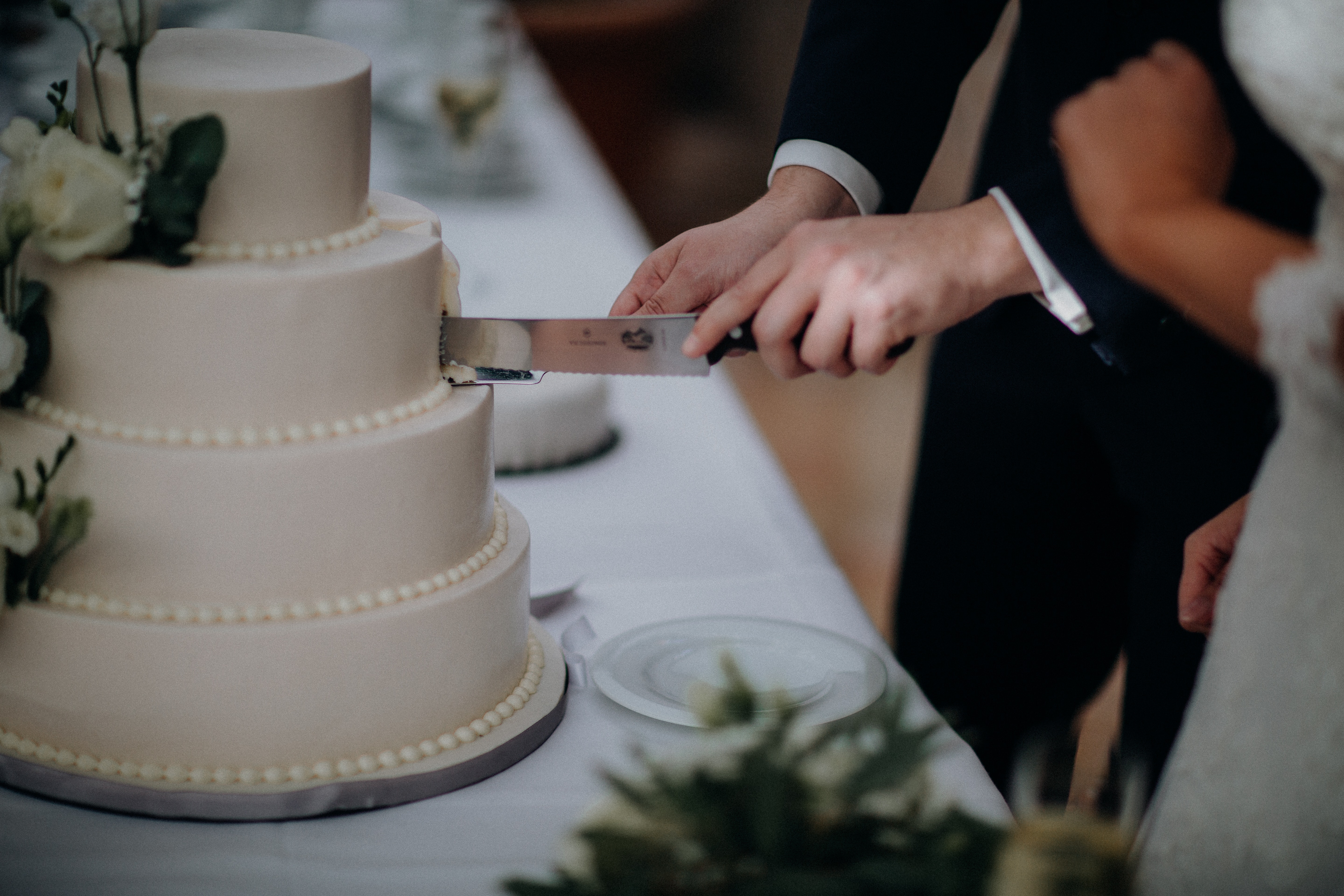A wedding cake has traditionally been the centerpiece of marriage ceremonies. They have various sizes, styles, and designs which mostly symbolize the personalities of the couple. But did you know that wedding cakes have been part of wedding ceremonies since the medieval times? Wedding cakes are originally made of wheat which is a symbol of fertility and prosperity. Before, wedding cakes are even thrown at the bride as a symbol of fertility.
There are different ethnic traditions the contemporary wedding cake has grown out of. One of the first ones started in Ancient Rome. Romans baked wheat and salt into small cakes to be eaten. During the wedding ceremony, the groom would eat part of the bread then the rest would be broken over the bride’s head. This was believed to bring good fortune and a blessing of a long life to the couple and their children. The guests at the ceremony would also try to obtain some crumbs because they believed they would share the good fortune of the couple. The wedding cake was a luxury item back then. It is a sign of celebration and social status. Having a bigger cake means having a higher social standing. As it evolved into a larger and modern version, breaking it over the bride’s head became impractical that’s why the tradition disappeared.
In the Medieval England, they described wedding cakes as bread which was flour-based foods without sweeteners. They also have a custom which involved stacking of small buns in a large pile in front of the newlyweds. They were stacked as high as possible so the couple would find it hard to kiss over the top. If they were able to kiss over the tall stack, it symbolizes a lifetime of prosperity.
In the 1660’s, a French chef visited London and he was appalled by the cake stacking ritual. He found it inconvenient to pile up smaller cakes into a mound. He then conceived the idea of constructing a wedding cake into a solid stacked system. That is when the earliest tiered wedding cakes were created. Utilized short-cut broomsticks were used to separate each layer. These cakes required days in advance to be prepared. However, there’s a lack of modern refrigeration at that time that’s why wedding cakes were frosted in lard to keep them from drying out. Before serving, the lard would be scraped off. Years later, sugar was added as an ingredient for wedding cakes. It improved the taste of the lard and allowed it to be left on the wedding cake as a decorative icing.
In the 17th century, the wedding cake took another development when the Bride’s Pie was introduced. It was filled with sweet bread and minced pie but the main ingredient was a glass ring. It was believed that the lady who found the ring would be married next. There was also a notion that sleeping with a piece of cake underneath the pillow will lead you to dream about your future spouse. This notion led to a tradition in the late 18th century, where brides would pass tiny crumbs of wedding cake through their rings and distribute them to guests. The guests would then place the crumbs under their pillow. However, this tradition was stopped when brides became superstitious about taking their rings off after the wedding ceremony. By the late 19th century, wedding cakes became more popular and the bride pie disappeared.
White Wedding Cakes
It has also been a tradition that wedding cakes are supposed to be white. It’s because white has always symbolized purity. Also, another way relates it to purity is it’s also referred to as the bride’s cake. In the Victorian times, white symbolizes money and social importance, that’s why a white wedding cake was highly desired in those times. A white wedding cake also became an outward symbol of wealth.
Cutting the Wedding Cake
Today, one tradition being practiced in wedding receptions is the cutting of the cake. Symbolically, it is the first task the bride and groom will do as husband and wife. The first piece of the cake would be cut by the bride with the help of her groom. Originally, this task is only for the bride and she will distribute pieces of it to guests. This is based on the Roman Empire tradition mentioned earlier where guests try to get some crumbs. In the present time, the couple would cut a slice of cake together and would proceed to feed one another from that slice. This is a symbol of the mutual commitment of the husband and wife to provide for one another.
Multi-Tiered Wedding Cakes
From a simple wedding cake, it became more extravagant because of the popularity of multi-tiered cakes today. In fact, most wedding cakes in the present time have more than three layers. Before, the upper layers of multi-tiered cakes are only mockups made of sugar. Pillars were used as support for the upper layers. And to prevent it from sinking to the bottom layer, the icing was hardened.
Some couples in the present time save the top layer for them to share on their first wedding anniversary. This tradition came from the 19th century where cakes for christening were also baked because bakers that time assumed that after the wedding, a christening ceremony would happen next. When three-tiered cakes became popular, couples rationalized each tier. The bottom would be for the reception, the middle would be distributed, and the top tier would be saved for a christening. However, as the time between weddings and christenings extended, the two events became separated with one another.
It’s amazing to know that wedding cakes as well as the traditions it comes with has evolved and has been developed several times before it became the wedding cakes we know today.



